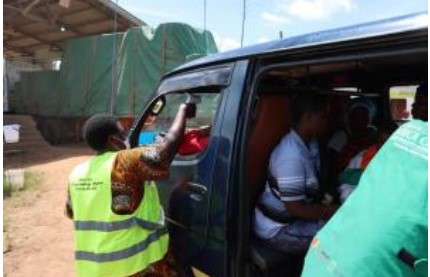Tanzania Announces Successful Containment of Marburg Virus Outbreak, With Lives Saved

In a significant development, Tanzania officially declared the end of the Marburg Virus Disease outbreak, marking the first recorded instance of the disease in the country. The outbreak, which emerged in the north-western Kagera region just over two months ago, resulted in a total of nine cases (eight confirmed and one probable) and sadly claimed six lives. On 21 March, the outbreak was declared after laboratory analysis confirmed that the cause of the reported deaths and illnesses in the region was Marburg.
With immediate action, national health authorities collaborated with the World Health Organization (WHO) and partner organizations to swiftly implement outbreak response measures, aiming to halt the virus’s spread and save lives. The outbreak’s conclusion was triggered on 19 April when the last confirmed case tested negative for the second Marburg test, initiating the mandatory 42-day countdown to declare the outbreak officially over.
Throughout Africa, WHO has been working closely with countries to strengthen preparedness and response capabilities for health emergencies. Teams of first responders, trained extensively in outbreak preparedness, response, and control, have been instrumental in Tanzania’s successful containment of the recently concluded Marburg outbreak. These response teams, with one trained in March 2023 and another in 2022 during Uganda’s battle against Sudan Virus Disease, played a vital role.
“With the investments being made to prepare for and tackle health emergencies in the region, we are responding even faster and more effectively to save lives, livelihoods, and safeguard health,” stated Dr. Matshidiso Moeti, WHO Regional Director for Africa, emphasizing the progress made in bolstering emergency response capacities.
In support of national efforts, the WHO office in Tanzania deployed outbreak response experts to enhance surveillance, testing, infection prevention and control, contact tracing, treatment, and community engagement. Furthermore, in collaboration with partners, WHO dispatched nearly three tons of personal protective equipment supplies and is collaborating with the Ministry of Health to provide support to Marburg survivors.
“Thanks to these efforts, Tanzania has been able to end this outbreak and limit the potentially devastating impacts of a highly infectious disease,” acknowledged Dr. Moeti, expressing gratitude for the collective endeavors that enabled Tanzania to overcome the outbreak.
Marburg is known for its high virulence and ability to cause haemorrhagic fever, with a fatality ratio of up to 88%. It belongs to the same virus family as Ebola virus disease, and its onset is sudden, characterized by high fever, severe headache, and intense malaise. Many patients develop severe haemorrhagic symptoms within seven days.
The virus is transmitted from fruit bats to humans and spreads among humans through direct contact with infected individuals’ bodily fluids, surfaces, and materials. Currently, there are no approved vaccines or antiviral treatments for Marburg. However, supportive care, including rehydration with oral or intravenous fluids, and treatment of specific symptoms, significantly improve survival rates.
Previous outbreaks and sporadic cases of Marburg have been reported in various African countries, including Angola, the Democratic Republic of the Congo, Ghana, Kenya, Equatorial Guinea, South Africa, and Uganda.


